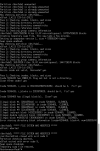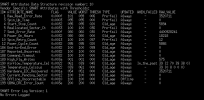Peso
Member
I’m not too concerned here about saving this disk if its not easy or not possible. So please, no one go out of their way.
Quick background, have taken a 500GB out of a donated HDR to put in my Mum’s faulty T2. Had found a 320GB out of a HDR that's been laying around from years ago, so put it in the donated HDR.
I can’t remember if I had taken the 320 out just to put a bigger a drive into one of various HDR’s I have, or replaced it because it was going funny. If it was going funny I should have left a note with it for my future self.
Been running fix-disk on it for a day and half, with it doing things to Inodes at lightening speeds. "fix-disk" did crash at one point with a message about running out of space. I failed to make a screen shot of exactly what it said, so will justifiably burn in hell forever. I now get...see attached when I run fix-disk.
A google around and I see reference to bad sectors in relation to error 9. Should I just toss it?
Quick background, have taken a 500GB out of a donated HDR to put in my Mum’s faulty T2. Had found a 320GB out of a HDR that's been laying around from years ago, so put it in the donated HDR.
I can’t remember if I had taken the 320 out just to put a bigger a drive into one of various HDR’s I have, or replaced it because it was going funny. If it was going funny I should have left a note with it for my future self.
Been running fix-disk on it for a day and half, with it doing things to Inodes at lightening speeds. "fix-disk" did crash at one point with a message about running out of space. I failed to make a screen shot of exactly what it said, so will justifiably burn in hell forever. I now get...see attached when I run fix-disk.
A google around and I see reference to bad sectors in relation to error 9. Should I just toss it?




 Just say no to forced hardware obsolescence and compulsory M$ accounts!
Just say no to forced hardware obsolescence and compulsory M$ accounts!